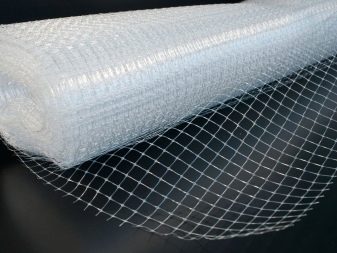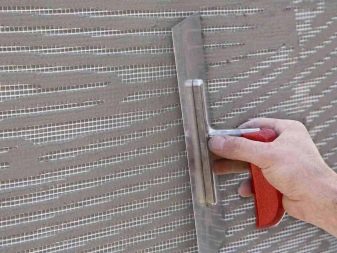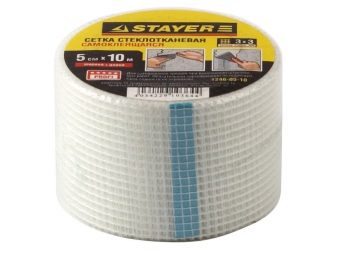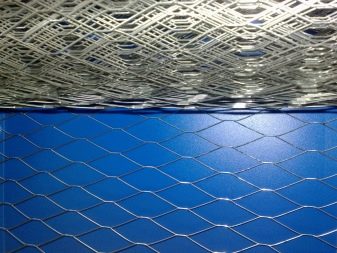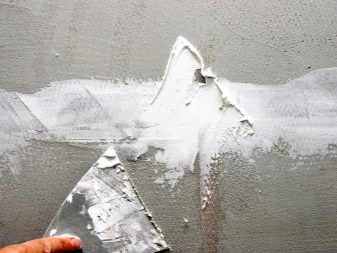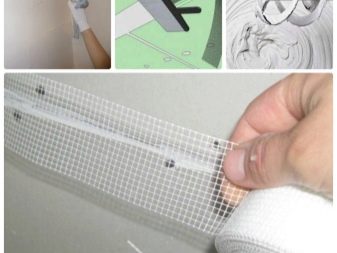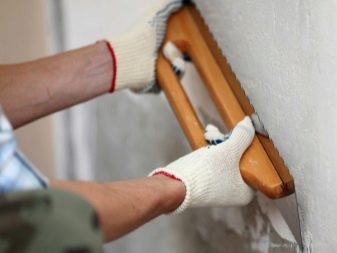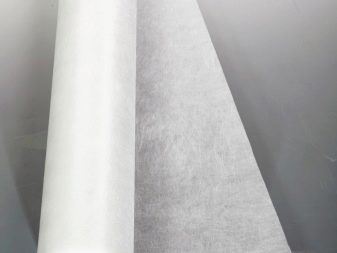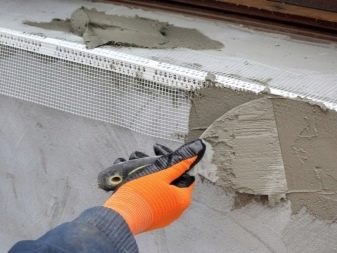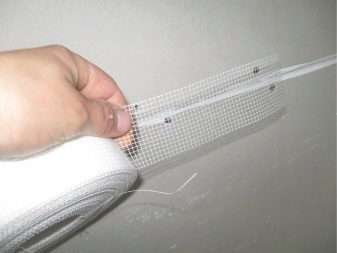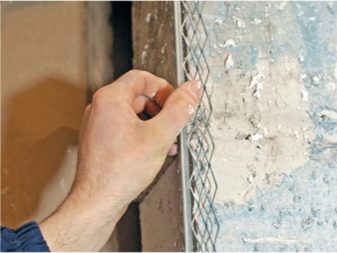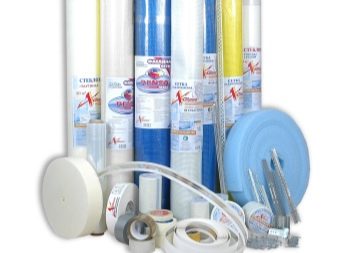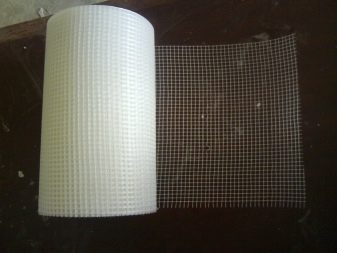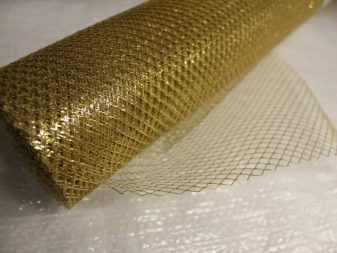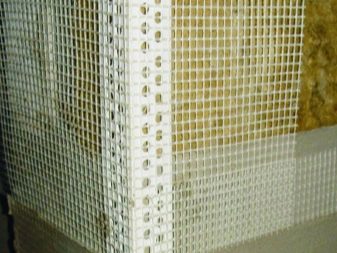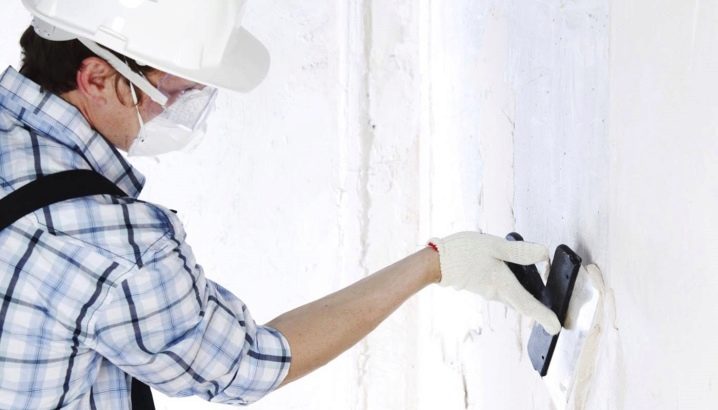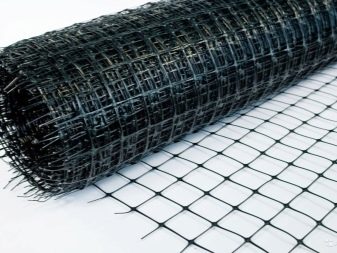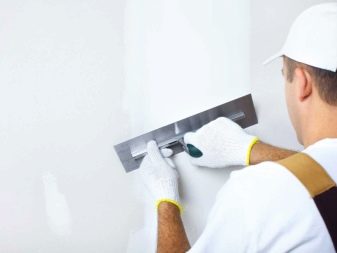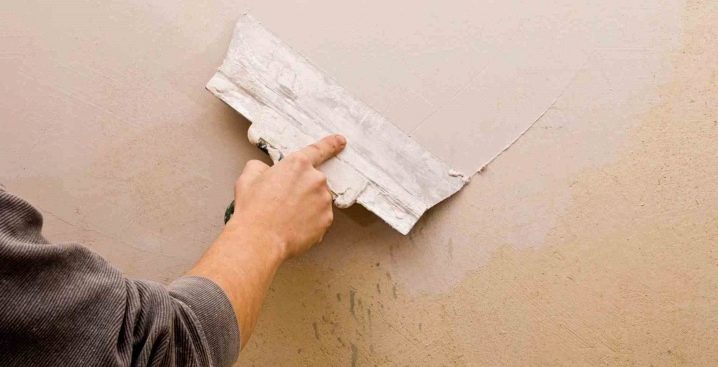Paint mesh for putty
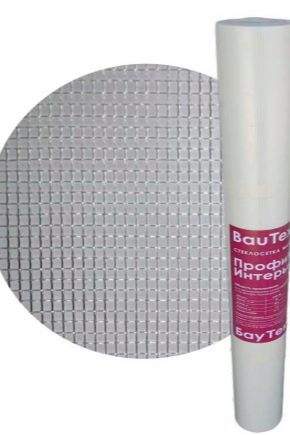
The painting grid is a reinforcing material consisting of cells of various sizes. It is made by the method of extrusion of molten silica glass and is used during the finishing works. Without a painting grid, it will not be possible to make a high-quality repair, as it ensures a reliable fixation of the joints and plaster.
Special features
Putting is the last stage of finishing work before applying paint and varnish products. The quality of the work depends on how long the repair will last, whether the walls will have an attractive appearance, as well as the strength and strength of the foundations. First of all, puttying is done to make the walls and ceilings evenness and smoothness, to seal the cracks. In this the main role is played by the painting grid.It is designed to keep the finish and not let it peel off. The mesh also protects against deformation and has a shockproof effect.
Reinforcing mesh has the following properties:
- refractoriness;
- moisture resistance;
- tolerates temperature fluctuations;
- non-toxicity;
- a wide range of applications (concrete, fiberboard, chipboard, brick and other materials).
Tear resistance depends on the thickness of the material and the size of the cells. The more stable it is, the higher the quality of the material. Modern grids are produced already impregnated with polyacrylic composition.
This is done in order to:
- maintain the strength of the material;
- do not perceive the effects of alkalis;
- increase the adhesion of the fabric to the surface;
- don't get hurt.
Kinds
For plaster used painting mesh based on fiberglass or polymers because they weigh little. They are used with a plaster layer thickness of 2-3 cm, if the thickness is less than 2 cm, then reinforcement is not necessary, since the layer will be able to hold itself. For layers of more than 5 cm, the paint grids are not suitable, but some experts impose several layers of reinforcing fabric. Reinforcing material is not enough to just put in the plaster layer, it must be fixed on the surface. For concrete walls, dowels are taken, for wooden walls - nails or screws.This is done to ensure that the plaster does not lag behind the wall due to poor fastening.
There are three types of paint nets, which differ in cell size:
- reinforcing putty net;
- serpyanka;
- mesh cobweb.
At the reinforcing mesh, the main criteria are the size of the cells and the density of the fiberglass. If the cells are small, then the mesh is soft. When choosing fiberglass you need to focus on the type of surface. The grid with thick threads is suitable for facade finishing, and with thin threads for interior. Fiberglass is resistant to mechanical loads, temperature extremes, high humidity. Also, the reinforcing mesh is lightweight, resistant to rust. If you just need to paint the walls in the end, then this type of grid works well. First you need to completely reinforce the surface of the walls with a putty net. For this purpose, it is better to take a grid with a cell size of approximately 5x5 mm, so that the plaster is better fixed. There should be no cracks on a well-formed wall.
Serpyanka also consists of cells of different sizes of a square shape, but it often contains an adhesive base.It is delivered in rolls up to 20 meters, and narrow in width. Ideal for hardboard, chipboard, drywall, cement and other materials. With its help, defects and cracks are eliminated, the surface of the ceilings is leveled, the walls become smooth. For the reinforcement of the joints of the walls, you can purchase a special corner of the grid, which will simplify the task and help to put everything in well. The cobweb mesh (fiberglass) is perfect for large surface areas, as it is a wide roll. Fiberglass enhances the adhesion of plaster, because it is a non-woven fabric obtained by pressing. Basically, cobweb is used in the reinforcement of ceilings.
Application
Before using the reinforcing fabric it is necessary to cut it into fragments, and already these fragments should be laid on the first layer of plaster. It is also important to overlap mesh fragments. Reinforcing fabric stretched on plaster from the center to the edges. It is important to monitor the edges of the canvas so that it does not look out.
The process of puttying using paint nets is almost the same for all types:
- it is necessary to prime the plastered surface;
- apply a putty layer only after the plaster has completely dried;
- with a spatula, the paint screen is laid on a dry layer of putty;
- apply another layer of putty.
When using serpyanka, you first need to clean the joints and prime them, and after drying, apply serpyanka. After all these actions, a second layer of putty is applied and flattened.
There are two ways to overlay serpyanka:
- Fixing the mesh on the surface to which the adhesive is pre-applied. For better fixation, it is necessary to press the serpyanka well to the surface. After the mesh is attached, you need to apply another layer of glue, and after complete drying to produce putty. This method can reduce the quality of the finish;
- A putty layer is applied to the surface, a grid is applied on it. Immediately after fixing the mesh, you must apply a second layer of putty.
With fiberglass, all work is done using a roller. First, glue is applied over the surface with a roller, then fiberglass is applied so that the strips overlap each other by 50 mm. To flatten the grid you need to hold it with a roller.Before using the gossamer mesh, it is necessary to prime the surface.
Grinding
After completing all the actions to reinforce the walls, it is necessary to finish the putty and polish the surface. Finishing putty is carried out in the same way as the main one. The main thing is to wait until the layer with the paint grid dries, otherwise the coating will not hold. The thickness of the finishing putty should be about 1-2 mm. After drying, you can proceed to grinding. Grinding is carried out to ensure that the walls were perfectly smooth and smooth, because the appearance of the room depends on it. In addition, paint or wallpaper do not hide defects, but emphasize them. When the surface is uneven, the wallpaper may peel off or frown. To achieve evenness of the walls, polishing is carried out several times in a well-lit place, so that minor defects are clearly visible.
After completion of the putty, it is impossible to proceed to grinding earlier than in a day, you need to wait until the putty layer is completely dry. For sanding apply fine sandpaper or sanding sponge. It is necessary to hold it over the entire surface to remove all the projections and irregularities.If there are large depressions, then they need to be puttied. When choosing sandpaper, you need to look at its grit. At the very beginning of grinding it is better to use coarse-grained, and at the end to give smoothness - fine-grained sandpaper.
Grinding is carried out in several stages, but the technology is the same - small portions of the surface are processed from top to bottom. The grit of sandpaper changes during the process. Usually in the last stage fine-grained sandpaper is used. For hard-to-reach places, use a sanding sponge or you can try to fold the sandpaper several times. In addition to emery paper, you can use an abrasive mesh. Its main difference from paper is high wear resistance, it is less clogged with dust, but also higher in price. If there is a grinder, then the grinding process will be greatly accelerated. Moreover, the quality of work will improve. The sandpaper is also attached to the machine, and the surface is treated.
After sanding the walls, you need to completely clean all surfaces of dust and dirt. To consolidate the result of the wall ground again.
How to glue the grid correctly, see the video below.

